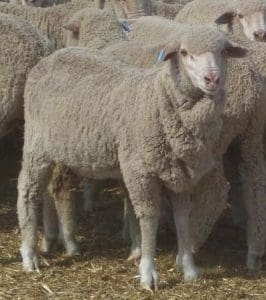
Northern NSW sheep producers are being urged to monitor flocks more closely.
NEW South Wales sheep producers have been urged to more quickly investigate cases of poor growth and condition in their flocks after a spate of deaths across the northern tablelands region.
Northern Tablelands Local Land Services veterinarians have reported a spike in health issues and deaths in mainly Merino sheep, and particularly among weaners, in the region.
They have recently investigated an increased number of mortalities and cases of poor growth or ill thrift, primarily in Merino sheep.
Inverell veterinarian Andrew Biddle said a wide range of factors are behind the spate of ill health and increased mortalities. These included problems with:
Nutrition: Sheep battling through long grass or overgrazing small areas of short feed in large paddocks may not be able to access adequate nutrients to maintain good health.
Worms: Barbers pole worm has been very prevalent this season and the current mild, moist autumn weather will extend the worm threat.
Liver fluke: Technically also a worm. If you are in a fluke-affected area or have purchased weaners from an affected area, get a worm test done and drench sheep if necessary.
Mycoplasma ovis: This is a blood parasite of sheep that causes anaemia and the symptoms can be very like Barbers Pole. The sheep’s immune system will normally fight off the infection, but stressed weaners can be severely affected.
Pink eye induced blindness: Pink eye in sheep is usually caused by chlamydia and is different to pink eye disease in cattle. Sheep normally recover without treatment, while yarding animals for treatment can increase disease spread. Blind weaners will usually move with their mob and cope well. However it may be economic to treat valuable animals with antibiotic eye ointment.
Cases of pneumonia, scouring and breech strike are also still showing up in sheep in a warmer than usual autumn.
Keep weaner live weight at 23kg
According to Dr Biddle, good management strategies can reduce the impact of disease and other health problems and the financial benefits are worth the effort.
“Producers should aim to keep weaner weights up around 23 kg.
“Lighter lambs will have lower muscle and fat reserves going into winter and are more likely to struggle to fight off common health problems,” he said.
“Lighter weaners need supplementation with a high protein product.
“A paddock containing high quality pasture, that has been spelled and has a low worm burden, will give weaners the best opportunity to thrive going into winter.”
Dr Biddle believes monitoring for worms is also critical for good management.
“Whether it be Barbers Pole or Black Scour Worm, ongoing monitoring of sheep will give you an insight into potential threats before they become a crisis.”
Dr Biddle advises producers to investigate health problems early and take action before large numbers of the flock are affected.
“Your Local Land Services District Veterinarian can help and we are always happy to advise on queries from local landholders,” he said.
For more information on sheep health contact your nearest Northern Tablelands Local Land Services office in Armidale, Inverell, Glen Innes or Tenterfield.
For the latest Paraboss outlooks click on http://www.paraboss.com.au/news/outlooks/nsw.php



HAVE YOUR SAY